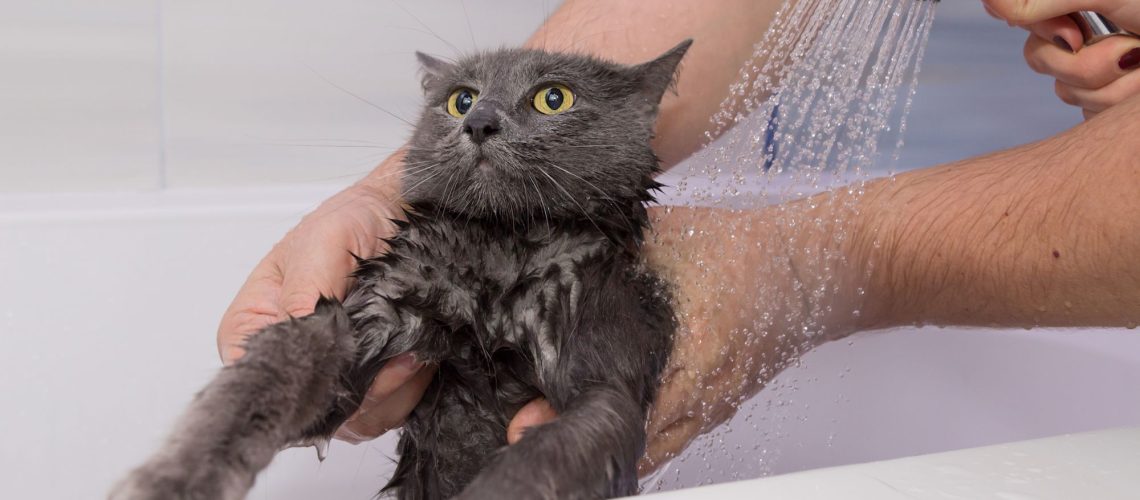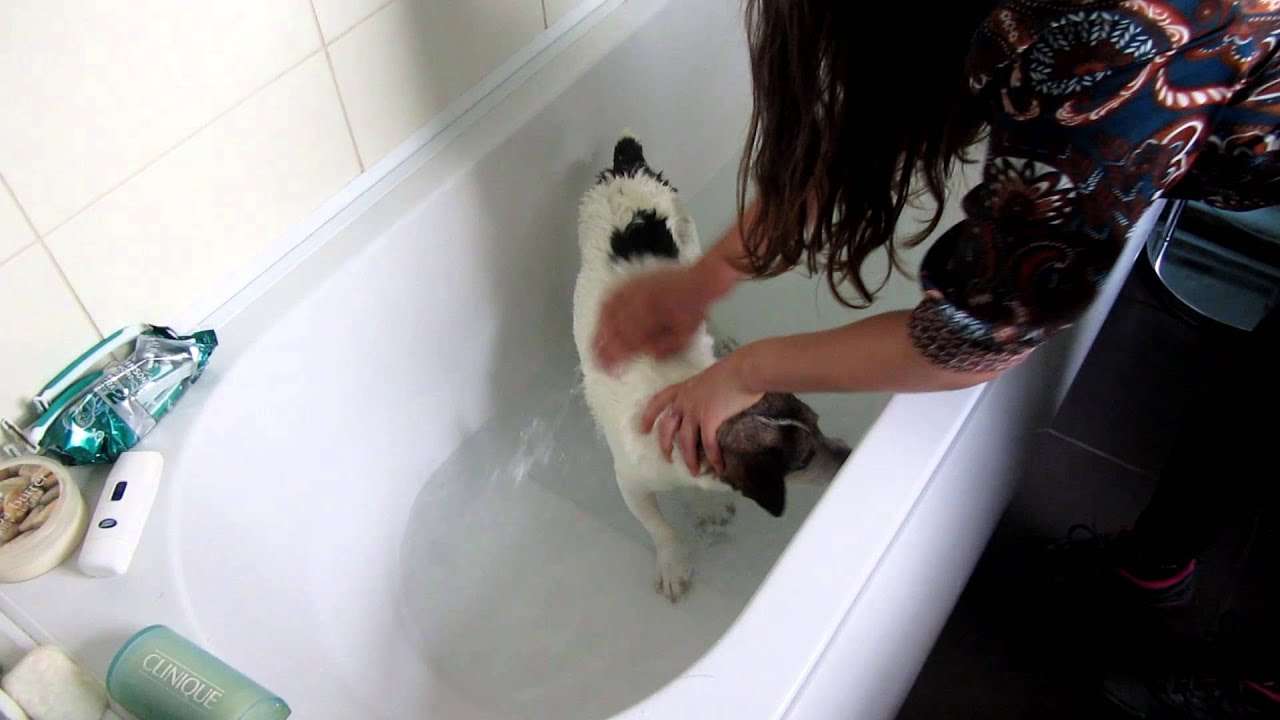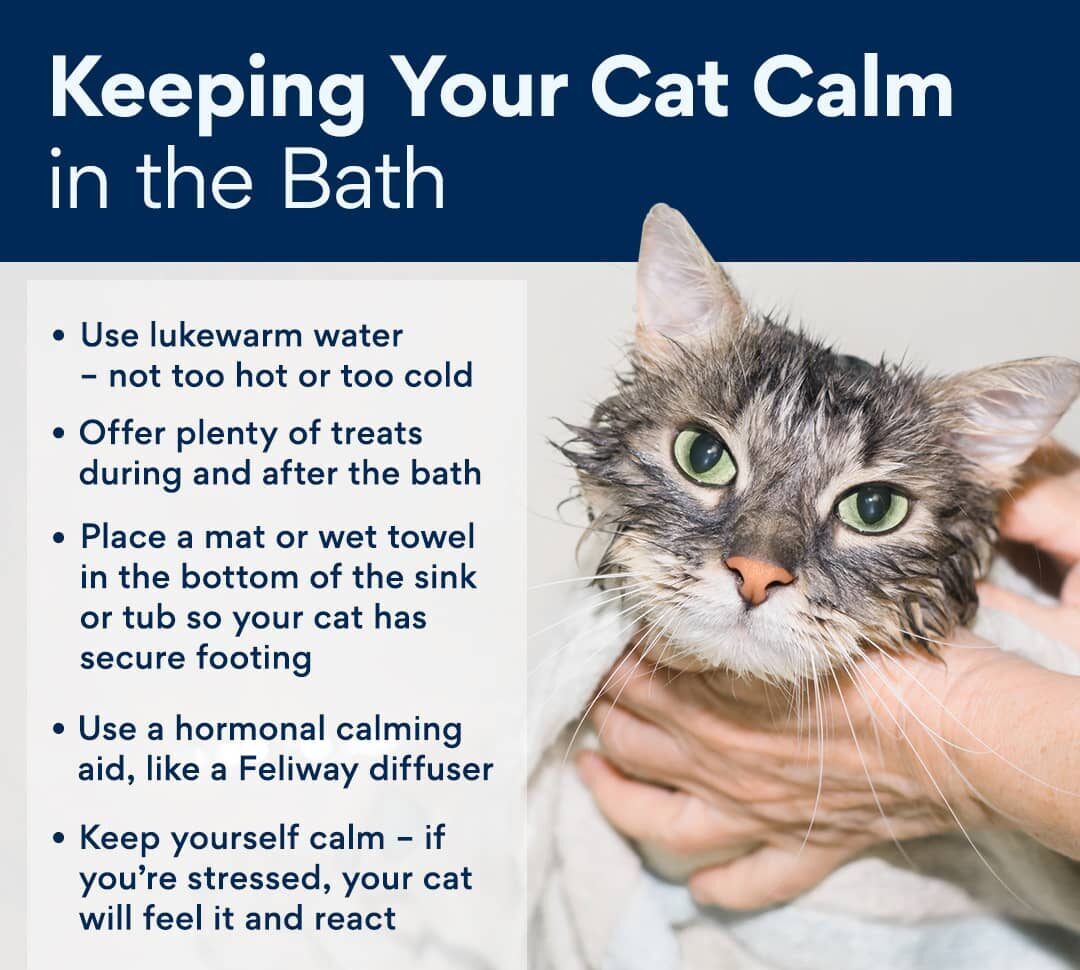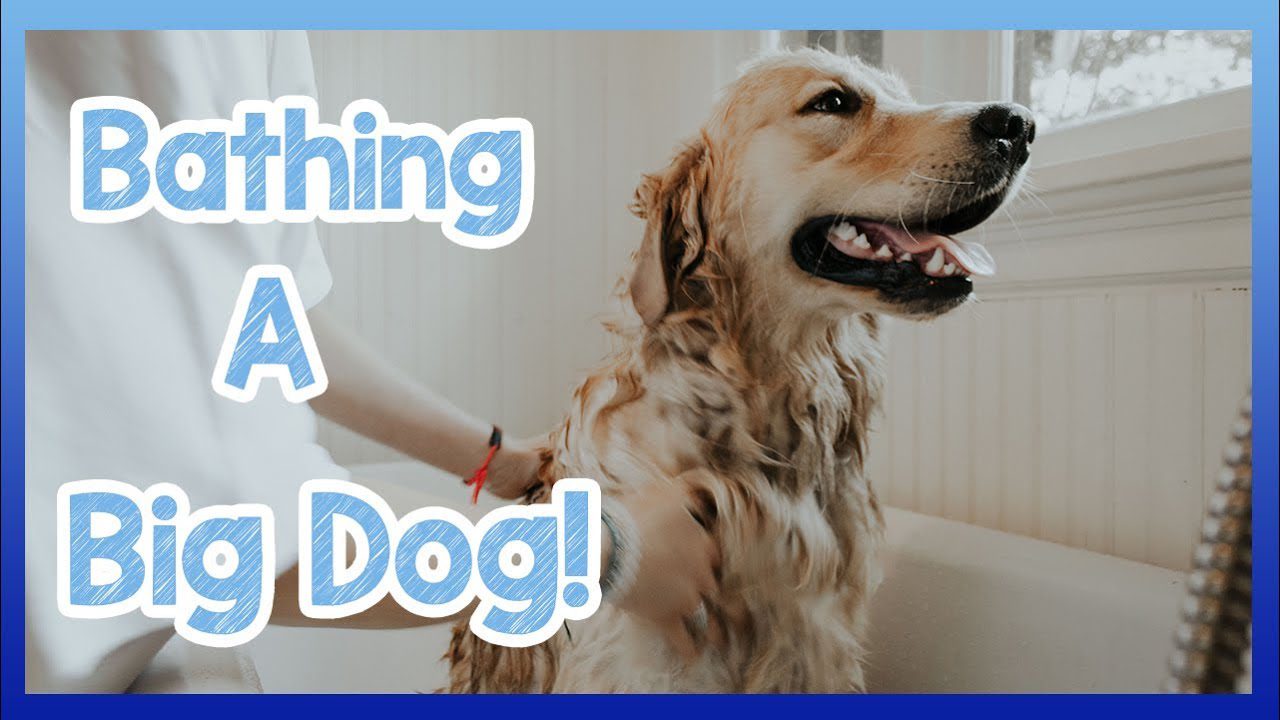Discover how to bathe your kitten! Keep their fur clean, prevent matting, reduce shedding, and check for skin abnormalities. Get tips on supplies and making bath time stress-free.
Reference used:
1. https://en.wikipedia.org/wiki/Cat_behavior
2. https://en.wikipedia.org/wiki/Cat_communication
Key Takeaways:
- Start by introducing your cat to the bathing process gradually, using positive reinforcement and treats to create a positive association.
- Use a gentle cat-specific shampoo and warm water, ensuring that you thoroughly rinse your cat to remove all traces of soap.
- Be cautious when handling your cat during the bath, supporting their body and keeping a firm grip to prevent them from escaping or getting injured.
- Dry your cat gently with a towel or hairdryer on a low setting, ensuring they are completely dry to prevent them from getting chilled.
- If your cat becomes extremely stressed or aggressive during baths, consult with a veterinarian or professional groomer for alternative bathing options or techniques.
The Importance of Bathing Your Kitten or Adult Cat
Bathing your kitten or adult cat is an important part of their overall grooming routine. Regular baths help to keep their fur clean and free from dirt, debris, and odors. It also helps to prevent matting and tangles in their fur, especially for long-haired cats.
Additionally, bathing your cat can help to reduce the amount of shedding by removing loose hair. This can be particularly beneficial for people who are allergic to cat dander.
Bathing your cat also provides an opportunity for you to check their skin for any abnormalities such as dryness, redness, or signs of parasites. It allows you to keep an eye on their overall health and address any issues early on.
Benefits of bathing your kitten or adult cat:
- Keeps their fur clean and free from dirt and odors
- Prevents matting and tangles in long-haired cats
- Reduces shedding
- Allows you to check their skin for abnormalities
- Promotes overall health and well-being
Remember:
Not all cats enjoy being bathed, so it's important to introduce them to the process gradually and make it a positive experience. With patience and practice, bathing can become a stress-free activity for both you and your cat.
Supplies Needed to Bathe a Kitten or Adult Cat
Before bathing your kitten or adult cat, it's important to gather all the necessary supplies. This will help ensure that the bathing process goes smoothly and efficiently.
The supplies you will need include:
- A cat-friendly shampoo (specifically formulated for cats)
- A large sink or basin, or a bathtub
- A non-slip mat or towel to place in the sink or bathtub
- Warm water
- A pitcher or handheld sprayer for rinsing
- Several towels for drying
- Treats or rewards for positive reinforcement
- Gloves (optional, to protect your hands)
Tips:
Make sure to choose a shampoo that is specifically formulated for cats. Using human shampoo or other products can be harmful to their skin and coat. It's also a good idea to have everything set up and within reach before bringing your cat into the bathing area.
How Often Should You Bathe Your Kitten or Adult Cat?
The frequency of bathing your kitten or adult cat will depend on several factors including their breed, lifestyle, and individual needs. In general, most cats do not require frequent baths as they are naturally skilled groomers and can keep themselves clean.
Factors to consider when determining how often to bathe your cat:
- Breed: Some breeds may require more frequent baths due to their specific coat type.
- Lifestyle: Outdoor cats may get dirtier more quickly and may need more frequent baths.
- Health conditions: Cats with certain skin conditions may require regular medicated baths as recommended by a veterinarian.
- Allergies: If you are allergic to cat dander, bathing your cat more frequently may help reduce allergens in your home.
Tips:
Consult with your veterinarian to determine the appropriate bathing schedule for your cat. They can provide guidance based on your cat's specific needs and help you develop a grooming routine that is best suited for them.
Preparing Your Kitten or Adult Cat for a Bath
Gathering Supplies
Before giving your kitten or adult cat a bath, it's important to gather all the necessary supplies. This includes a cat-friendly shampoo, towels, a non-slip mat for the bathtub or sink, and a brush or comb. Additionally, make sure the water temperature is lukewarm and fill the tub or sink with enough water to comfortably bathe your cat.
Creating a Calm Environment
To prepare your kitten or adult cat for a bath, it's crucial to create a calm and soothing environment. Find a quiet room where you can close the door to prevent any distractions. Play soft music or use white noise to drown out any loud noises that may startle your cat. It's also helpful to have treats nearby as rewards for good behavior during and after the bath.
Safely Handling Your Kitten or Adult Cat During a Bath
Securely Holding Your Cat
When handling your kitten or adult cat during a bath, it's important to do so in a safe and secure manner. Gently hold your cat by placing one hand under their chest while supporting their hindquarters with your other hand. This will help prevent them from slipping out of your grasp and potentially injuring themselves.
Using Towels as Support
For added stability and comfort, consider using towels as support when handling your cat during the bath. Place one towel on the bottom of the sink or tub to provide traction and prevent slipping. You can also drape another towel over your lap if you're bathing your cat on a countertop or table. This will give them something familiar to stand on while keeping them secure.
Using the Right Shampoo for Your Kitten or Adult Cat's Bath
Choosing a Cat-Friendly Shampoo
When selecting a shampoo for your kitten or adult cat's bath, it's important to choose one specifically formulated for feline use. Avoid using human shampoos or products that contain harsh chemicals, as they can irritate your cat's skin. Look for gentle, hypoallergenic shampoos that are designed to maintain the natural oils in your cat's coat.
Considering Special Needs
If your kitten or adult cat has specific skin conditions or sensitivities, consult with your veterinarian before choosing a shampoo. They may recommend a medicated shampoo or provide guidance on which ingredients to avoid. It's always best to prioritize your cat's individual needs when selecting a shampoo for their bath.
A Step-by-Step Guide to Bathing Your Kitten or Adult Cat
Introducing Your Cat to Water Gradually
Start by introducing your kitten or adult cat to water gradually. Use a cup or pitcher to pour lukewarm water over their body while speaking softly and offering treats as positive reinforcement. This will help them acclimate to the sensation of being wet and make the bathing process less stressful.
Gently Massaging the Shampoo into Their Coat
Once your cat is wet, apply a small amount of cat-friendly shampoo onto your hands and gently massage it into their coat. Be careful not to get any shampoo in their eyes, ears, or mouth. Use slow, circular motions to work the shampoo through their fur and remove any dirt or debris.
Special Considerations for Bathing Long-Haired Kittens or Cats
Preventing Matting and Tangles
Long-haired kittens or cats require extra attention during baths to prevent matting and tangles in their fur. Before bathing, thoroughly brush their coat to remove any knots or mats. During the bath, use your fingers or a wide-toothed comb to gently work through their fur and prevent tangles from forming.
Drying and Brushing Their Coat
After the bath, it's important to dry and brush your long-haired kitten or cat's coat properly. Use a towel to gently pat them dry, being careful not to rub vigorously as this can cause tangles. Once they are mostly dry, use a brush specifically designed for long-haired cats to remove any remaining moisture and prevent matting.
Tips to Help Your Kitten or Adult Cat Feel Comfortable and Relaxed During and After Their Bath
Using Positive Reinforcement
Throughout the bathing process, use positive reinforcement techniques such as treats, praise, and gentle petting to help your kitten or adult cat feel comfortable and relaxed. This will create positive associations with bath time and make future baths easier.
Providing a Warm and Quiet Space
After the bath, provide your cat with a warm and quiet space where they can relax and dry off. Place a cozy blanket or towel in their favorite spot along with some toys or treats to keep them occupied. This will help them unwind after the bath and associate it with a positive experience.
In ConclusionHow do you bathe a cat or kitten?
To begin bathing your cat, first fill the bathtub with about 2 to 5 inches of lukewarm water. Follow the instructions on the shampoo carefully. Begin by wetting your cat's fur and gently shampooing her, starting with her face but being careful to avoid her eyes, ears, and nose. For the rest of her body, you can use your fingers to create a lather.
Can you use Dawn on kittens?
"If you have young kittens or puppies, they are usually too young to use flea preventatives that are recommended by the manufacturer. However, if you choose to use Dawn soap on them, it is advised to use a small amount and dilute it with water. Afterward, it is recommended to use a flea comb to remove any remaining dead or dying fleas." (May 10, 2023)
Do cats like warm or cold water for baths?
Cats are generally more relaxed when they are in warm and comfortable water. It is important for the water to be neither too hot nor too cold, as extreme temperatures can cause discomfort for the cat. Some individuals choose to bathe their cats in a bathtub with a shallow amount of warm water, just enough to cover the cat's chest.
How often should you wash your indoor cat?
While most indoor cats do not require regular baths, if you choose to give your cat a bath, it is advised to limit it to only a few times a year. It is important to consider your cat's behavior and level of aggression as it can affect the decision to bathe them.
Can I wash my kitten with dish soap?
Baby shampoos are specifically formulated to be gentle on human babies but are also suitable for use on kittens. Another option is to use fragrance-free dish detergent. Regardless of the soap you choose, it is important to avoid getting it in your kitten's eyes and to ensure that the inside of their ears stays dry.
Should I bathe my indoor kitten?
However, most cats don't typically need a full bath unless they are unusually dirty. Brushing their fur is usually enough, unless there are issues with fecal or urinary incontinence. Bathing is not commonly recommended for feline patients.
More Reads

Dr. Clara Bennett
Next Steps In Mastering Cat Care
Next Steps In Mastering Dog Care
Join Our Newsletter
Subscribe to receive our latest updates in your inbox!
















